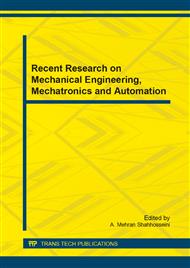[1]
P. Chen and M. Zhu: Materials today, Vol. 11(2008), pp.36-43.
Google Scholar
[2]
J. Yang, A. Sudik, C. Wolverton, et al.: Chemical Society Reviews, Vol. 39(2010), pp.656-675.
Google Scholar
[3]
T. Tsumuraya, T. Shishidou, T. Oguchi: Physical Review B, Vol. 77(2008), p.235114.
Google Scholar
[4]
Y.L. Teng, T. Ichikawa, Y. Kojima: The Journal of Physical Chemistry C, Vol. 115(2010), pp.589-593.
Google Scholar
[5]
H.M. Jin, P. Wu: Applied Physics Letters, Vol. 87(2005), pp.181917-181917.
Google Scholar
[6]
T. He, H. Wu, G. Wu, et al.: Energy & Environmental Science, Vol. 5(2012), pp.5686-5689.
Google Scholar
[7]
X. Zheng, G. Wu, W. Li, et al.: Energy & Environmental Science, Vol. 4(2011), pp.3593-3600.
Google Scholar
[8]
O.M. Løvvik, S.M. Opalka: Physical Review B, Vol. 71(2005), p.054103.
Google Scholar
[9]
Íñiguez J, T. Yildirim, T.J. Udovic, et al.: Physical Review B, Vol. 70(2004), p.060101.
Google Scholar
[10]
X. Zheng, Z. Xiong, Y. Lim , et al.: The Journal of Physical Chemistry C, Vol. 115(2011), pp.8840-8844.
Google Scholar
[11]
Y.E. Filinchuk, K. Yvon, G.P. Meisner, et al.: Inorganic chemistry, Vol. 45(2006), pp.1433-1435.
Google Scholar
[12]
F.E. Pinkerton, M.S. Meyer: The Journal of Physical Chemistry C, Vol. 113(2009), pp.11172-11176.
Google Scholar
[13]
X. Liu, D. Peaslee, and E.H. Majzoub: Journal of Materials Chemistry A, Vol. 1(2013), pp.3926-3931.
Google Scholar
[14]
X.L. Zheng, G.T. Wu, T. He, et al.: Chinese Science Bulletin, Vol. 56(2011), pp.2481-2485.
Google Scholar
[15]
H. Wu, W. Zhou, K. Wang, et al.: Nanotechnology, Vol. 20(2009), p.204002.
Google Scholar
[16]
W.S. Tang, G. Wu, T. Liu, et al.: Dalton Transactions, No. 18(2008), pp.2395-2399.
Google Scholar
[17]
H. Wu, W. Zhou, T.J. Udovic, et al.: Chemistry of Materials, Vol. 20(2008), pp.1245-1247.
Google Scholar
[18]
F.E. Pinkerton, M.S. Meyer, G.P. Meisner, et al.: The Journal of Physical Chemistry B, Vol. 110(2006), pp.7967-7974.
Google Scholar
[19]
F.E. Pinkerton, M.S. Meyer, G.P. Meisner, et al.: Journal of alloys and compounds, Vol. 433(2007), pp.282-291.
Google Scholar
[20]
M.C. Payne, M.P. Teter, et al.: Reviews of Modern Physics, Vol. 64(1992), pp.1045-1097.
Google Scholar
[21]
P. Hohenberg, W. Kohn: Physical Review, Vol. 136 (1964), p. B864-B871.
DOI: 10.1103/physrev.136.b864
Google Scholar
[22]
J.P. Perdew, A. Ruzsinszky, et al.: Physical Review Letters Vol. 100(2008), p.136406.
Google Scholar
[23]
H.J. Monkhorst, J.D. Pack: Physical Review B, Vol. 13(1976), p.5188–5192.
Google Scholar


